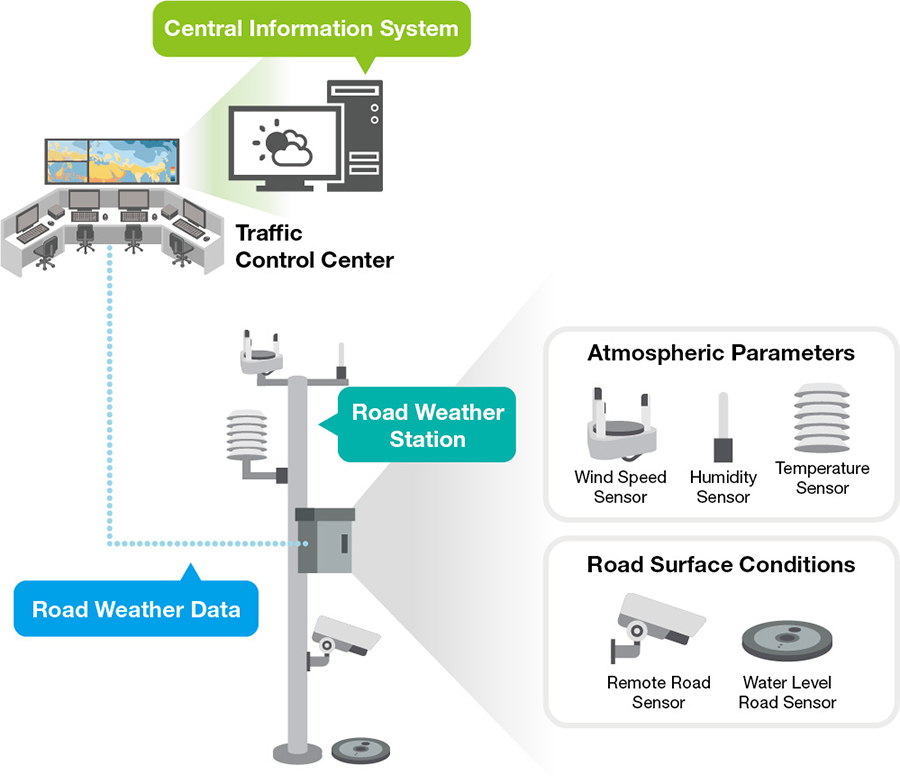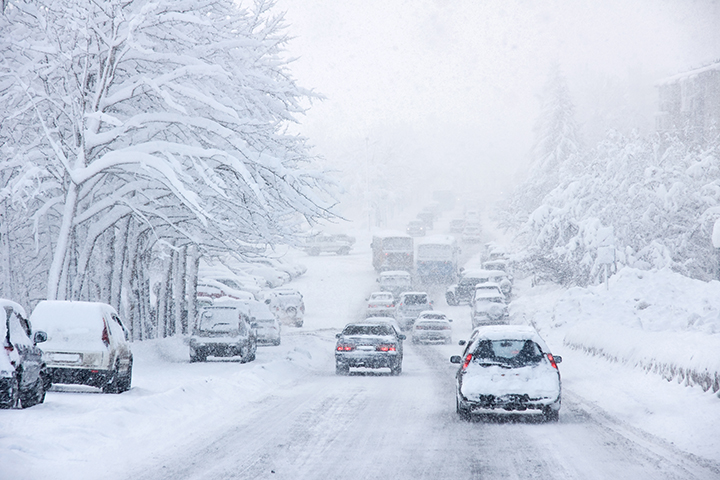Inclement weather conditions are a major factor in road incidents in various regions of the globe. A significant 21% of vehicle accidents in the United States are attributed to weather conditions1. Prompt alerts about evolving weather and road conditions, like reduced visibility from dense fog or dust storms, or icy roads leading to skidding, empower drivers to take necessary precautions and enhance overall traffic safety.
Utilizing Road Weather Information Systems (RWIS), which utilize sophisticated weather sensors and cellular technologies to gather real-time data on roadside conditions, is becoming more prevalent. This allows traffic operators to provide immediate alerts on road and weather conditions to aid drivers in preventing accidents.
An RWIS typically comprises of roadside weather stations linked to a central information network. These road weather stations gather up-to-the-minute weather data, such as atmospheric conditions and road surface states, through a range of sensors like air temperature sensors, pressure sensors, wind speed gauges, and road surface sensors. Subsequently, this road weather data is transmitted via a communication network to a central information system located at a regional traffic control center.

The advantages include:
- Real-time data to assist drivers in planning their route before commencing their journey or adapting to changing conditions en route;
- Enhanced responsiveness of traffic operators to incidents; and
- Ability for road maintenance crews to leverage current and historical RWIS data to prioritize tasks and schedule maintenance activities.
In the absence of a reliable data communication link between remote weather stations and the central system, information cannot be relayed to the control center and subsequently shared with drivers. Here are some deployment suggestions to boost connectivity for RWIS.
Firstly, ensure your connectivity solution effortlessly acquires sensor data from various interfaces. Road weather stations utilize a diverse range of field sensors to capture atmospheric conditions and road surface states. These sensors often operate on different communication interfaces such as digital, analog, or serial for I/O data collection. Managing, maintaining, and replacing multiple sensors with differing interfaces can be challenging. Hence, apart from supporting multiple interfaces, ensure your connectivity solution offers user-friendly hardware and software configurations for initial setup and future maintenance requirements.
Secondly, secure your cellular network transmissions. While connecting road weather stations and the central information system via a LAN network or optical fibers is feasible, in many cases it may not be practical or cost-effective. Cellular network communication bridges the gap. Nonetheless, to minimize unreliable connections and ensure cellular network dependability, having a backup mechanism for your cellular connection is crucial. For instance, a dual-SIM card setup enables a cellular device to automatically switch to an alternate carrier network in case of a base station failure or deterioration of the existing connection quality below acceptable levels. Beyond a backup mechanism facilitated by hardware design, your cellular devices should also possess a software feature that automatically detects connection issues and initiates a recovery process to restore cellular connections before these issues escalate to complete network failure. Opting for cellular devices with these functionalities can enhance communication reliability, reduce data loss, and enable traffic operators to access complete information for swift decision-making.
Lastly, employ secure IT protocols for seamless integration of your field data into the municipal network. As an integral part of citywide network infrastructure, the traffic control center necessitates communication with other systems using IT protocols. Since most field sensors only support OT protocols, connectivity solutions supporting both OT and IT protocols simplify integration into IT-based RWIS. This not only saves time and effort spent on converting data formats but also reduces the risk of data exposure during information transmission over cellular networks and unsecured public connections through secure IT protocols like SNMPv3.
Being an esteemed authority in industrial networking, Moxa has aided transportation authorities worldwide in enhancing road safety through dependable connectivity solutions ensuring the smooth operation of their RWIS. Access our case studies to explore how other organizations devised tailored communication systems with Moxa for their weather monitoring applications.
Require assistance in selecting connectivity or networking products for your venture? Download our E-book and acquaint yourself with the essential criteria for choosing suitable products according to your requirements.
1 Source: https://ops.fhwa.dot.gov/weather/q1_roadimpact.htm
- Not Only for Automobiles: Discovering CANbus Technology in Various Industrial Settings - October 29, 2024
- Boost Your Network Performance: An Exciting Manual to PoE Switches! - September 10, 2024
- Understanding Gigabit Switches: Industrial vs Regular Gigabit - September 4, 2024


